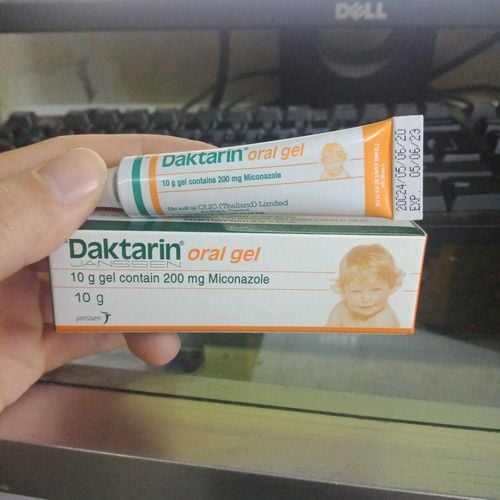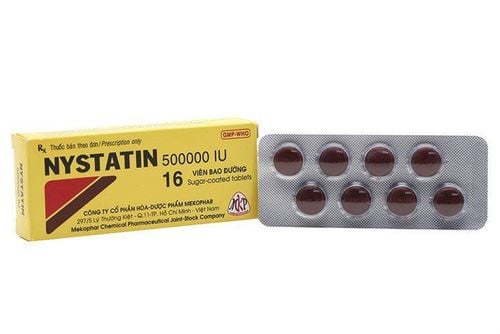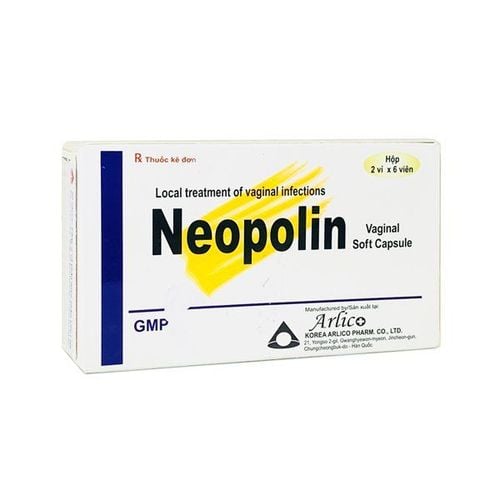This is an automatically translated article.
Children's tongue is one of the signs of a yeast infection. This common oral infection can cause white patches in a baby's mouth, making sucking and swallowing uncomfortable. From there, the baby will become less breastfed and stop sucking, causing slow weight gain. Therefore, parents need to know what to do when their child is stung, to help the child drink milk deliciously and grow up quickly.
1. What is a child's tongue?
Tinnitus , also known as thrush , is a yeast infection that usually appears as white or yellow irregularly shaped patches or sores covering the inside of your baby's mouth. These signs in infants usually appear on the gums, tongue, roof of the mouth, and/or inside the cheeks.The causative agent of tinnitus is a yeast or fungus called Candida albicans. Even though it's only a mild infection, a persistent tongue-tie can be upsetting or even painful for your baby, causing him to stop nursing and slow down his growth.
2. What causes a child's tongue to be bitten?
Although the yeast infection that causes thrush appears in the baby's mouth, the condition can already start in the mother's birth canal during natural labor and infect the baby from birth life.
Candida is an organism that usually occurs in the mouth or vagina and is often attacked, colonized by other microorganisms in terms of location and nutrition. However, when the body is sick, immunocompromised, starts taking antibiotics, or undergoes hormonal changes (such as during pregnancy), the balance of beneficial bacteria can be disturbed, creating conditions for Candida to grow and cause an infection.
Because tinnitus has a mechanism of appearing at birth, it is most common in infants and children under 2 months. Older children can also get thrush if they are taking antibiotics to fight another infection because they kill "good" bacteria that help control yeast or have a weakened immune system.
On the other hand, a baby with a tongue-tie can also form and develop if the mother's breasts are not cleaned and dried properly after breastfeeding. These are ideal conditions for yeast to grow and cause infections in children. Likewise, a pacifier or bottle can also make the inside of a baby's mouth too moist, creating the perfect environment for yeast to grow and cause disease.
3. What are the symptoms of a baby's tongue?
Babies with a black tongue have a common and easy to see sign of white patches inside the baby's mouth. A white coating or white patches on the tongue, gums, inner cheeks or roof of the mouth that is tough and difficult to clean, distinguishable from milk residue, which usually settles on the baby's tongue after feeding but usually dissolves within an hour.
Therefore, to find out if your child's white tongue is caused by milk or a blocked tongue, try to wipe it gently with a damp soft cloth or gauze finger. If your child's tongue turns pink and looks healthy after wiping, no further treatment is needed. On the other hand, if the white patches don't come off, or if they peel and leave behind a red, rough patch, and your baby is in pain, fussing, or fussing, it could mean that your baby has a blocked tongue and you should contact your doctor. Pediatrics.
In addition, the baby seems irritable during feeding or when the baby is sucking on the nipple to start sucking, then turns away because of pain is another sign that the baby may have thrush.
4. What to do when a child is bitten?
Because the infection is very contagious, it is best for both mother and child to be treated. For your child, your pediatrician may prescribe an antifungal medication (such as Nystatin), which is applied topically on the inside of the mouth and tongue several times a day for 10 days. Parents must remember to apply the medicine to all white patches in the child's mouth. In cases where it is difficult to apply medication due to constant pain and fussiness, the doctor can prescribe fluconazole, an oral medication by dropper.
For a nursing mother, your doctor may also prescribe a prescription antifungal cream on your breasts. When properly treated, a yeast infection responds quickly and should go away within a week. During this time, the baby still needs to be breastfed. Because breastfeeding doesn't have to be interrupted if one or both mother and baby have been diagnosed with thrush. However, the condition can make breastfeeding painful – another reason why you need prompt treatment for both.
On the other hand, even if your baby is cranky while feeding, continue to breastfeed or bottle feed your baby if you are pumping or formula feeding. Once treatment begins and symptoms begin to subside, your baby will return to normal milk intake as before the illness.
5. Measures that can be taken to prevent a child from being bitten
There is absolutely nothing you can do to prevent your baby from getting a yeast infection in the birth canal for vaginal delivery - unless you have a cesarean section. However, parents can still avoid future yeast infections in their babies by regularly cleaning and sterilizing pacifiers, bottles, and breast pump parts that come in contact with the mother's nipples. .
In addition, the mother also needs to let the breasts dry completely between feedings to prevent the growth of bacteria and other microorganisms. Changing breast pads after breastfeeding, wearing non-moisturizing cotton bras, and regularly washing bras in hot water followed by drying in the sun can also be effective ways to kill yeast. .
On the other hand, because antibiotics can facilitate yeast infections, they should be used only when absolutely necessary, that is, when prescribed by a doctor that is appropriate for both mother and baby's medical conditions. .
In a nutshell, baby tongue thrush is a common infection in the mouth of infants. This condition is caused by a yeast such as Candida albicans. Although a blocked tongue can cause a lot of discomfort, stop feeding and weight loss, the condition is treatable with common medications. However, the most important thing is to use antifungal medicine for both mother and baby as well as apply proper hygiene measures, use antibiotics as indicated to prevent future re-infection.
Please dial HOTLINE for more information or register for an appointment HERE. Download MyVinmec app to make appointments faster and to manage your bookings easily.













